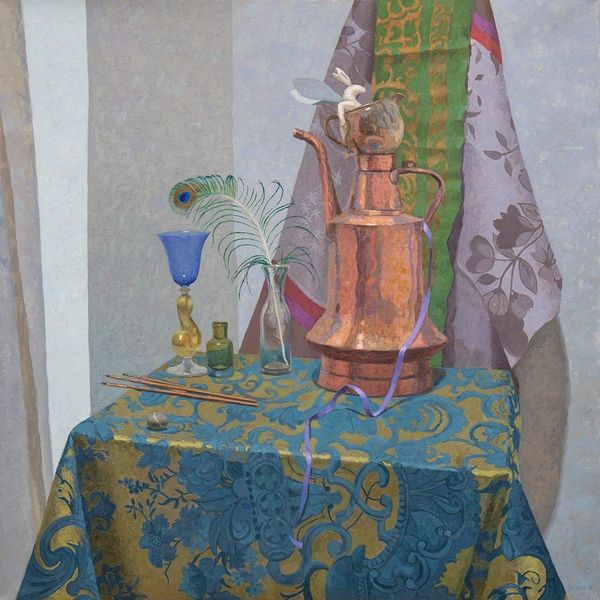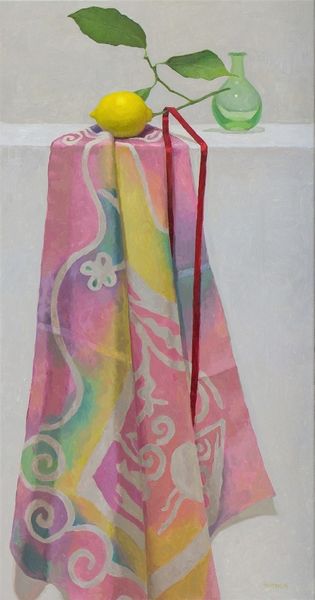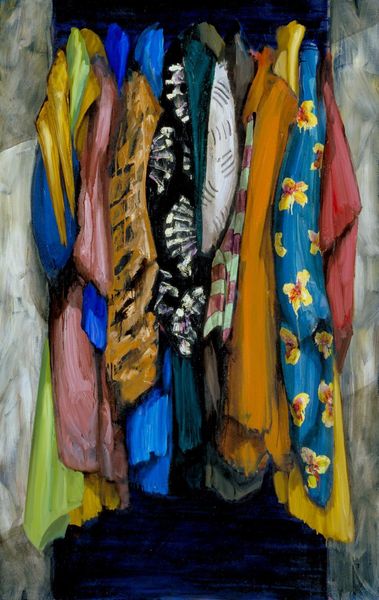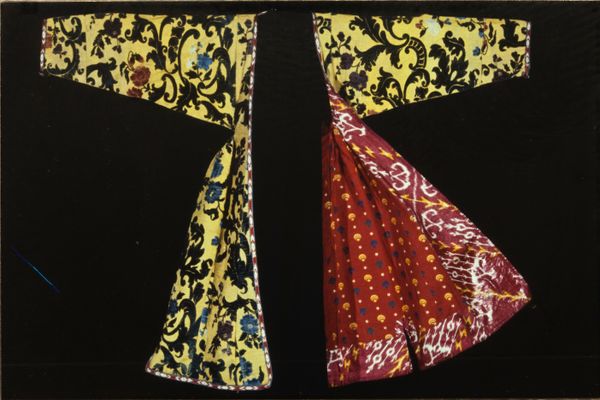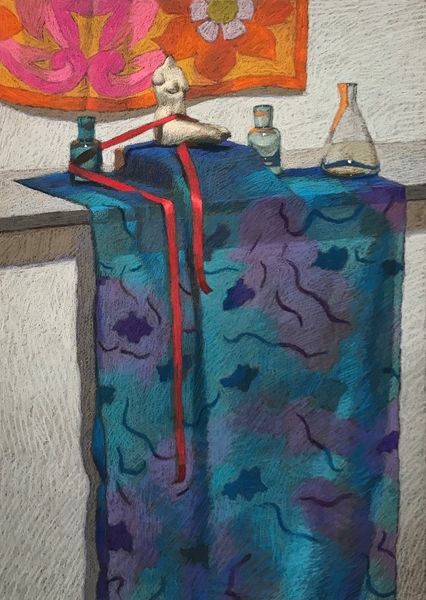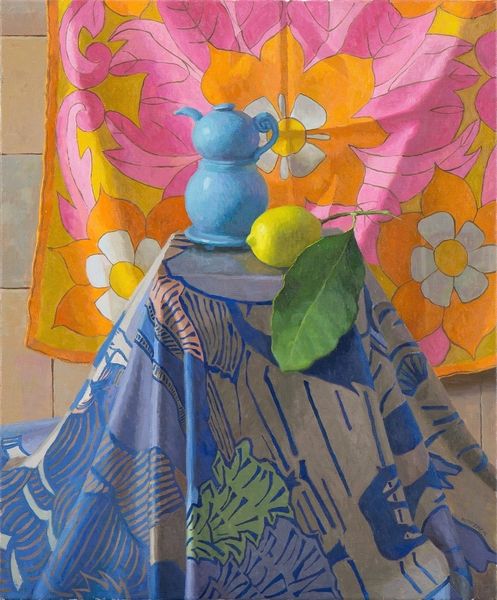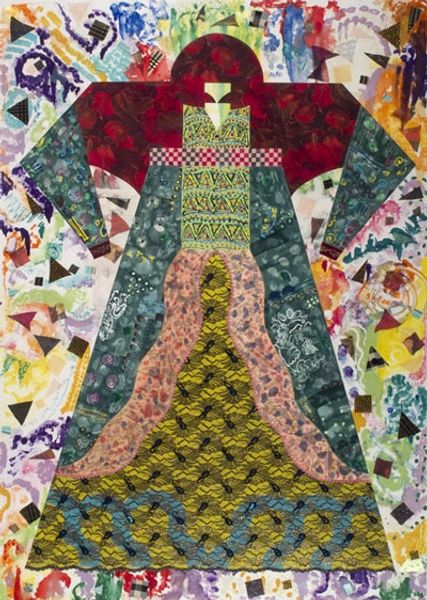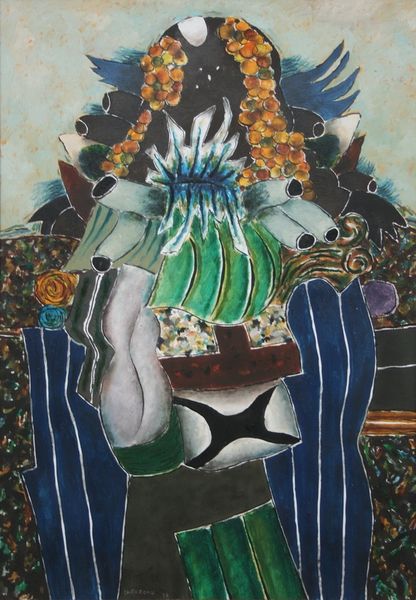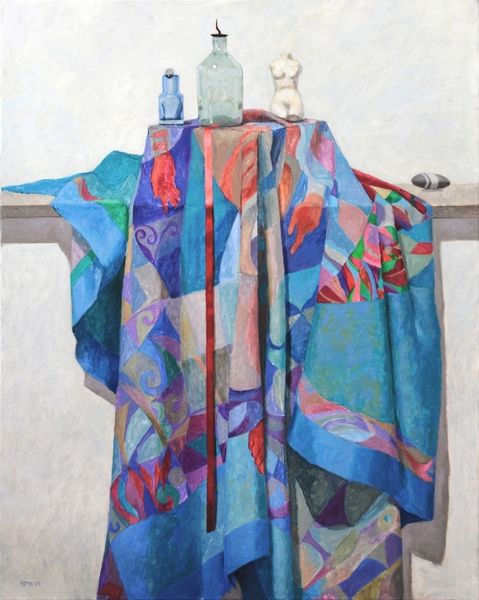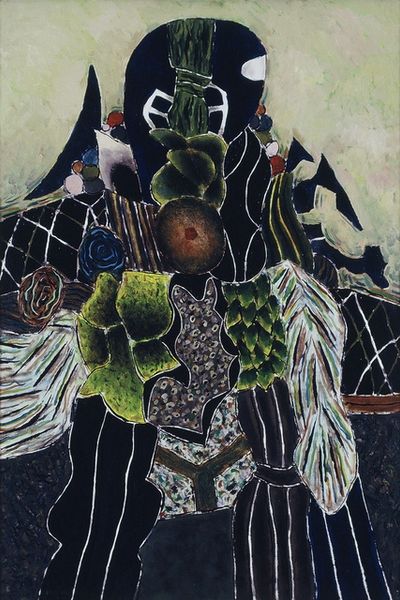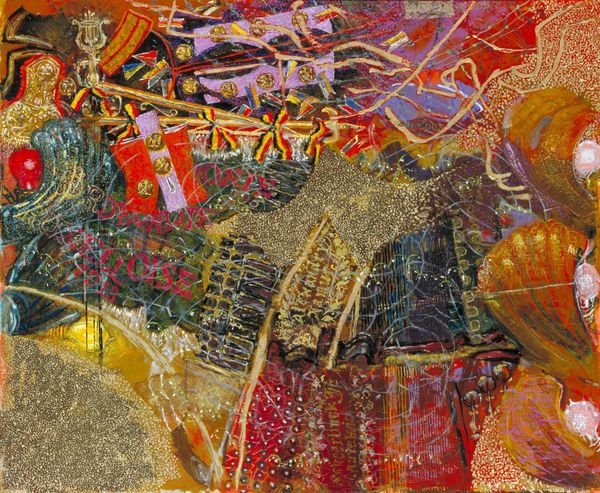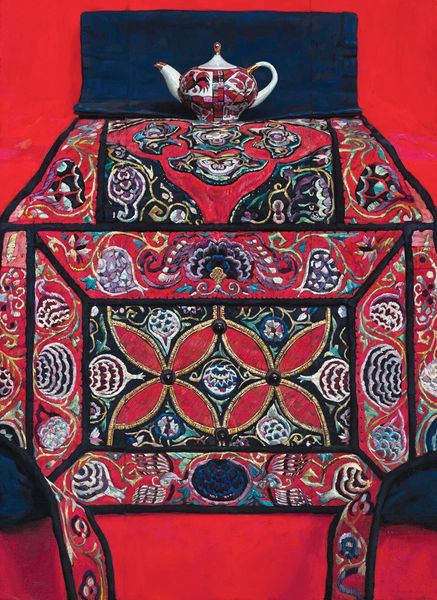
oil-paint
#
gouache
#
oil-paint
#
folk art
#
geometric
#
painting art
#
modernism
#
realism
Copyright: Modern Artists: Artvee
Editor: Here we have "The Orator" by Melissa Hefferlin, made with oil paint and gouache. I'm struck by the vibrant colors and how they're layered against a seemingly simple still life. How do you read the materials and composition in this work? Curator: I see this as a deliberate construction, focusing on the act of making. Notice the different fabrics: the striped cloth, the patterned silks, even the metallic sheen of the teapot. What do these material choices suggest about Hefferlin's labor and, perhaps, her relationship to traditional still life painting? Consider how commercially manufactured and found objects become entangled. Editor: It’s interesting how you frame it as labor. I hadn’t thought about the selection and arrangement of these items as a conscious act of production, rather than just representation. The textures almost seem to clash. Curator: Exactly. The painting isn’t just *of* objects; it’s *about* the interaction and history embedded within them. Consider the act of acquisition itself - where did these objects originate? What value do we assign to each, and why? Does that tension you observe, that clash, mirror larger societal contradictions regarding class or taste? Editor: That makes me see the teapot and fabrics as more than decorative items. The composition almost feels like a stage. I wonder if "The Orator" title is pointing us toward some unspoken commentary through the objects? Curator: Precisely! By examining the materials, production techniques, and their juxtaposition, we unlock a deeper reading about the culture they inhabit and reflect. The "stage" is then set for analyzing not only objects but also the system from which they come. Editor: That's a really interesting way to approach the piece, looking beyond just the aesthetic surface to consider the underlying means of production. Curator: Right. It's about disrupting that passive viewing experience, recognizing that the work has material and historical roots. I will consider this for future reference. Thanks.
Comments
No comments
Be the first to comment and join the conversation on the ultimate creative platform.
